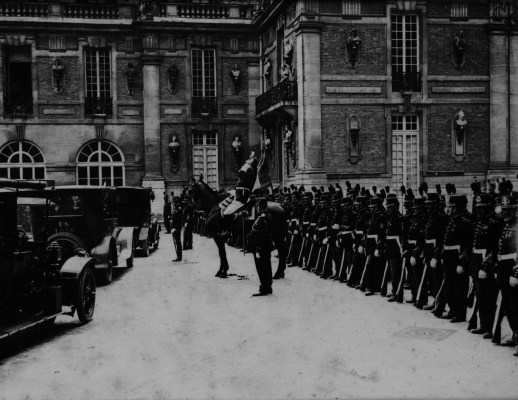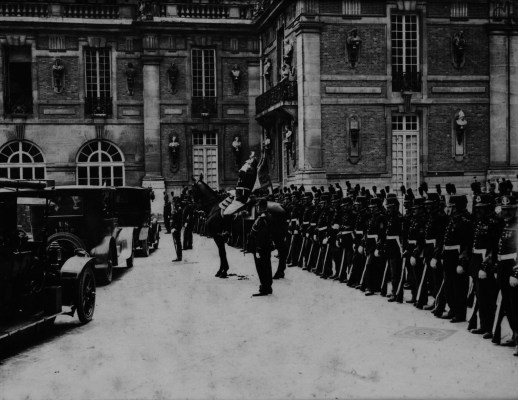
No one would have predicted that the three of us would ever find ourselves on the same side of the corporate patent wars, let alone speak with one voice about how to end them.
We have come together because we see that patent owners and product makers have become trapped in an endless cycle of demands, counter-demands, and unproductive litigation. Unless we find a way out of this conflict, we will almost certainly see a repeat of yesterday’s costly and wasteful smartphone wars in tomorrow’s wireless connected car sector.
Product makers accuse patent owners of threatening lawsuits and using the expense of the legal process in order to demand extortionate royalties for their patent rights. For their part, patent owners say product makers refuse to pay fair compensation for the patented wireless, audio, and video features that give their products value as communication and entertainment devices.
The truth is, both sides have a point. That’s because patent owners and product makers are caught in a classic “prisoner’s dilemma,” in which the lack of transparency and fair ground rules in patent licensing lead companies on each side of a patent dispute to try to game the other. This only ensures that both sides suffer a negative outcome in outrageously-expensive litigation.
Unlike in the real property business, in intellectual property (IP) licensing there is little or no independent appraisal of the assets (i.e., patents) or transparency as to how prices are determined. And because most patent license agreements are confidential, there is little or no information or “comps” on what others have paid for similar patent rights. Nor are there any widely-accepted ground rules for what constitutes fair negotiating practices between buyers and sellers.
This is especially true in regards to standards-essential wireless patents, which are supposed to be licensed on fair, reasonable, and non-discriminatory (FRAND) terms. But what’s fair or reasonable about the fact that an impossibly-large number of LTE (4G) cellular patents — more than 60,000, in fact — have been declared “standards essential” without any independent evaluation of those patents whatsoever?
That’s right, those 60,000-plus patents have all been self-declared “standards-essential” by companies each seeking their own commercial advantage. What you’ve got is a wireless gold rush — with plenty of fool’s gold posing as real gold.
So the three of us, working with industry leaders on both sides of the patent owner vs. product maker divide, have developed a three-pronged plan for ending the wireless patent wars and creating a more productive and less litigious patent licensing sector.
First, whittle down this ridiculous mountain of self-interested wireless patent claims to the fewer than 2,000 patent families that most experts believe are truly essential to smartphone handset makers. We can do this by excluding duplicative patents, expired patents, patents not in force in major economic markets, and patents for base station, infrastructure, and other innovations not relevant to handset makers. Independent, neutral evaluators will then confirm each patent’s relevance to the LTE standard for handsets.
Second, base royalty prices not on the subjectively-argued value of each individual patent examined in a vacuum, but on the objective value of the entire stack of LTE patents in a phone. A recent court judgment valued that LTE stack at roughly $20 for a smartphone with an average selling price of $324, but with greater price transparency from both sides, the market itself will likely set a rational price for the LTE stack. Royalties can then be paid to patent owners roughly proportionate to each patent owner’s percentage share of the total LTE patent stack.
And third, ensure greater transparency by promoting collective licensing solutions such as patent pools that openly publish their pricing frameworks and offer consistent terms to all licensees. Given the “prisoner’s dilemma” dynamics in patent licensing today, it is unrealistic to expect any one patent owner to unilaterally forego potential business advantage by revealing its pricing strategies. But collective licensing approaches such as patent pools reduce the risks of transparency for everyone.
As the IP journal Intellectual Asset Management recently noted, “There’s a growing sense that a collective approach to licensing could help solve some of the problems of the industry which, in sectors like mobile, has been scarred by long-running and costly disputes between patent owners and potential licensees.”
Our “peace plan” would eliminate many of the incentives and opportunities for gamesmanship in wireless patent licensing. And most importantly, it would help patent owners and product makers avoid a repeat of yesterday’s costly smartphone wars in tomorrow’s connected car, autonomous vehicle, and Internet of Things (IoT) industries.
It’s time for a new realignment in the industry — one in which the conflict is no longer between product maker and patent owner, but between those who license patents on a fair and transparent basis, and those who do not.


